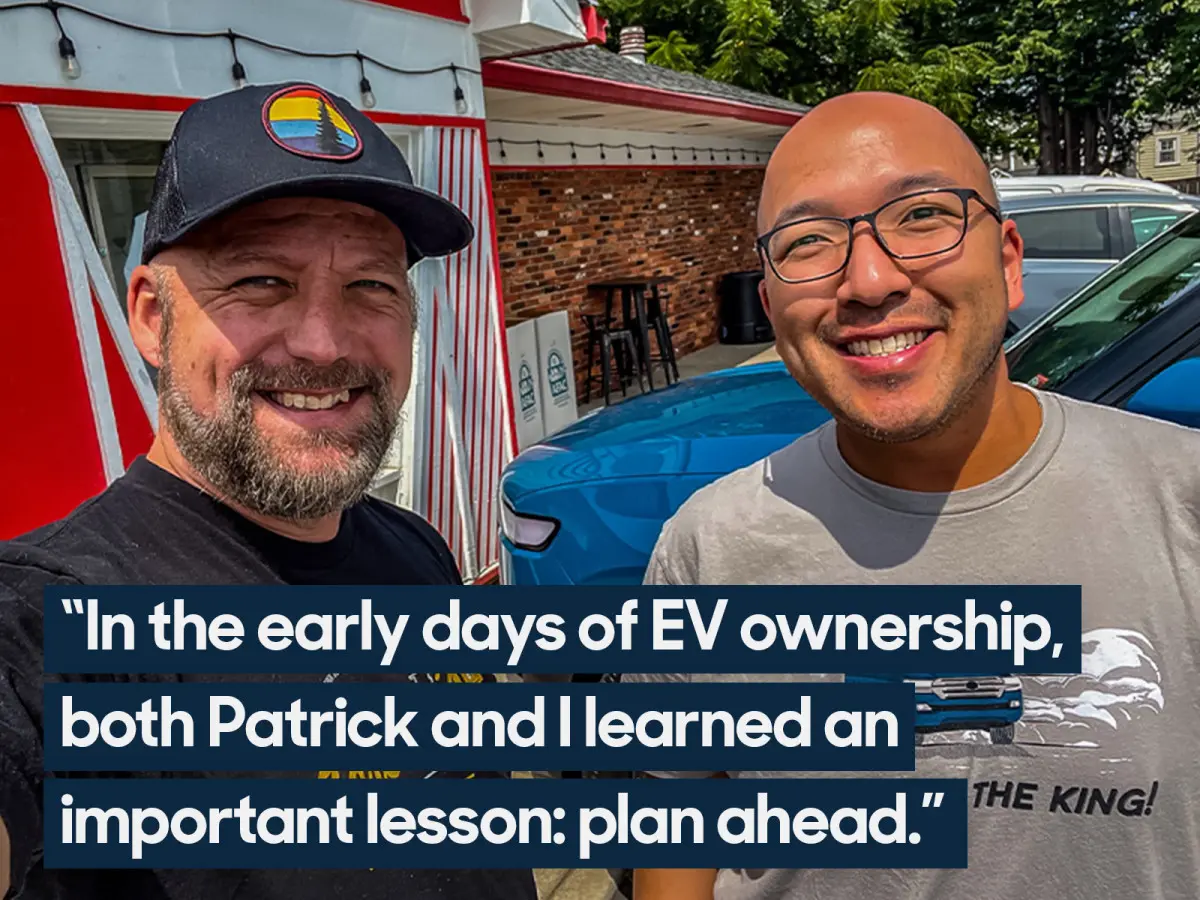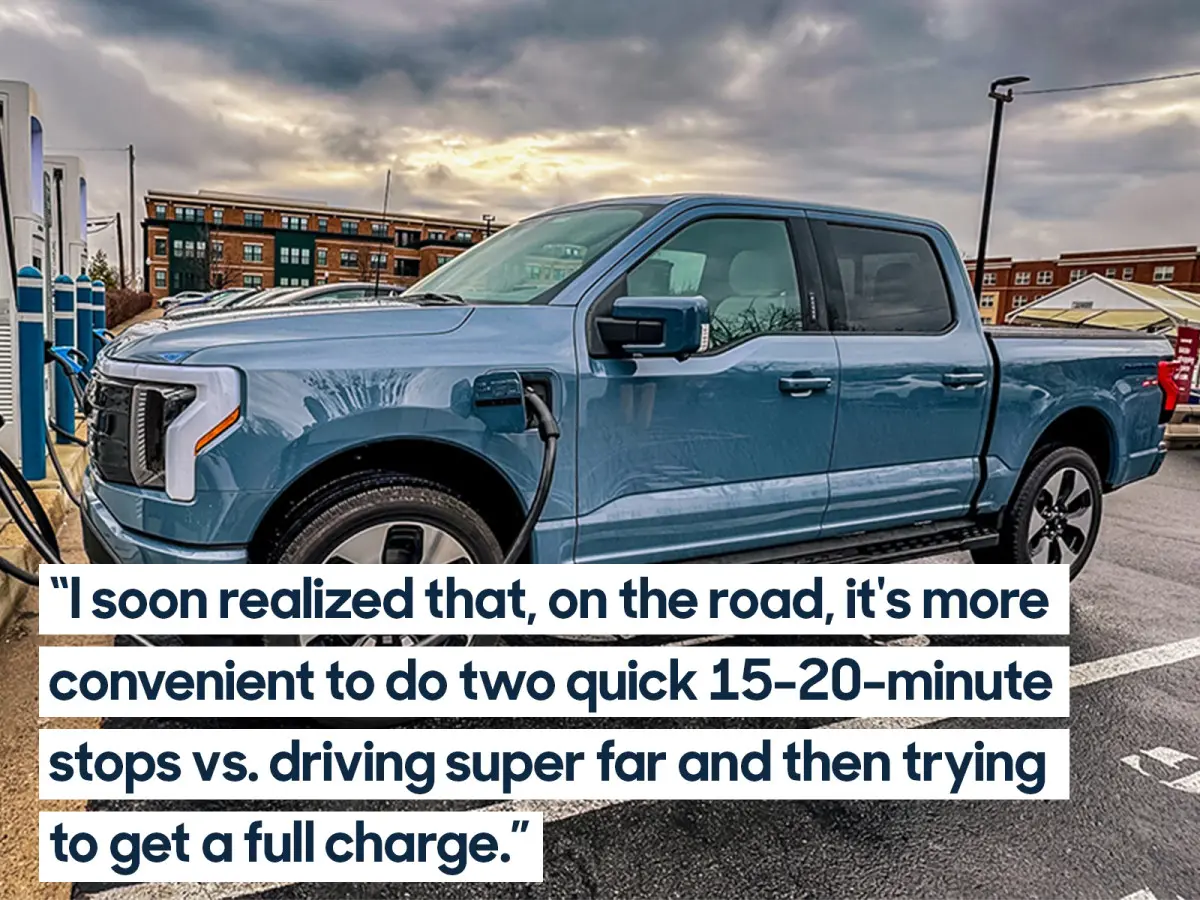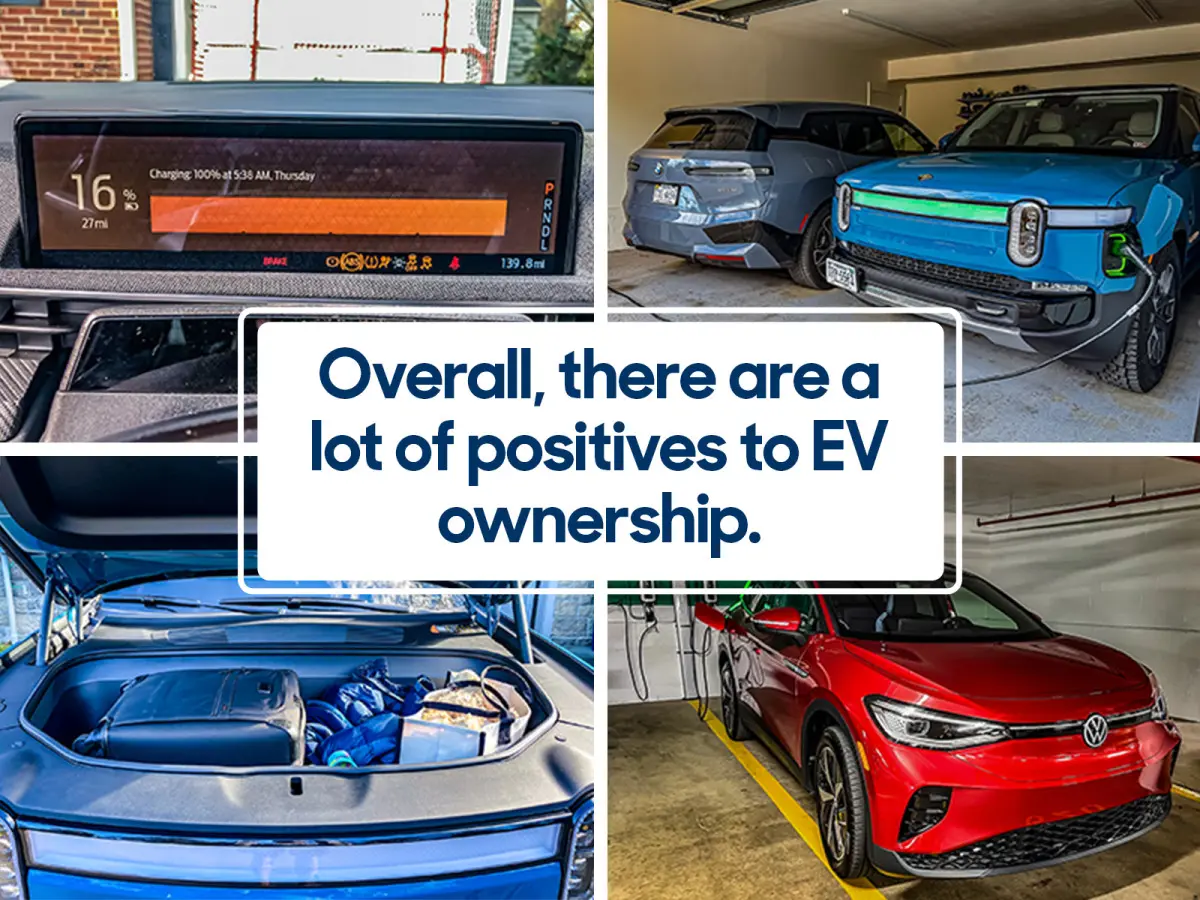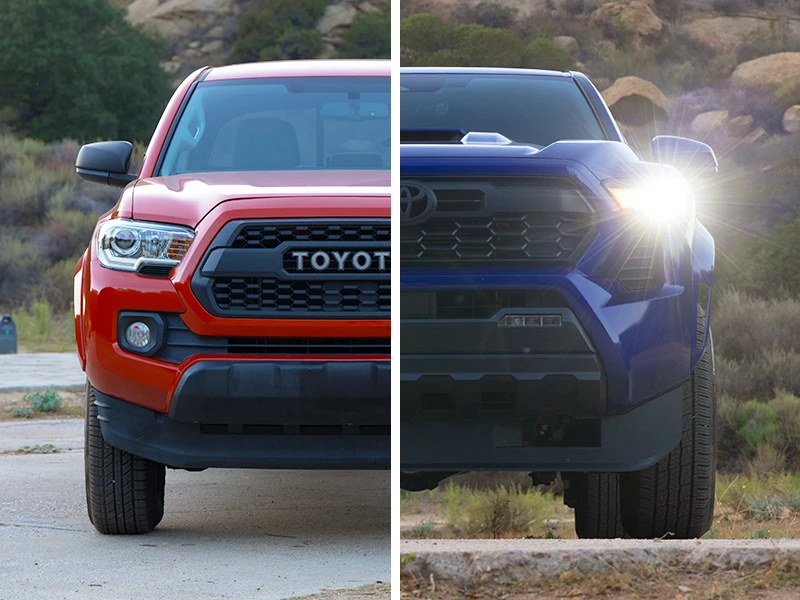I’ve always loved the Ford Mustang.
So, it came as no surprise that shortly after I had the chance to review the newly released all-electric version of the Mustang—the Ford Mustang Mach-E—I decided to buy one.
It was a radical departure from my previous gas-powered Mustang, but ownership was initially pretty great.

At the time, I lived in a single-family home, and charged nightly via a standard household plug (120-volt outlet). With an overnight charge, I’d get about 30 to 50 miles of range, which was plenty to get me to school drop-off and pick-up, plus run light errands around town. With another gas-powered car as a backup, I wasn't initially all that anxious about charging my first EV.
About ten months into owning it, I moved to an apartment with no charging options on the premises. So, after only a year of ownership, I sold the Mach-E—primarily because of my circumstances and lack of charging options.
Meanwhile, Patrick, a friend of mine who owns three EVs, has no problem getting his cars charged up for everyday use. He installed a Level 2 charger (240-volt/50-amp) in his home garage to charge his Rivian R1S, Polestar 2, and BMW iX nightly.

“95% of our driving is around town,” says Patrick. “So, when we can charge to full overnight, we have more than enough range for a full day of even random unforeseen events.”
"If you barely drive, I could see someone getting by with a standard household outlet," Patrick says, "but that would be tough for anyone doing longer distances each week. For example, if that only gave you 2 to 3 miles per hour of charging back, a 12-hour charge overnight would only get you 24 to 36 miles."
Not bad if you’re just running errands around town, but it won't get you ready for a longer drive. For most people, that might not feel like enough.
"I think a Level 2 outlet should be considered if you want to mitigate the need for random fast charging. This can add upwards of 10 to 20 miles per charging hour (compared to a Level 1), enough to replenish some heavy driving needs overnight,” says Patrick.
Beyond the cost of installing a Level 2 charger, there are also energy costs when charging at home (but home-charging is still usually much cheaper than filling up at the pump).
"We're at about 12 to 13 cents per kilowatt hour for home charging," Patrick says.
Based on Patrick's experiences, that means charging the Polestar from zero to 100% would cost approximately $10 for around 300 miles of range (according to EPA-estimated range when fully charged on 78 kWh long-range models).
Electricity prices can vary greatly from the national average depending on where you live, so do your own research for accurate numbers.
Know your charging needs and plan accordingly
In the early days of EV ownership, both Patrick and I learned an important lesson: plan ahead.
You can find Level 3 chargers out in public that are much faster and use direct current (DC) instead of the alternating current (AC) of Level 1 and Level 2 chargers you might have at home. Public fast chargers are the faster way to charge up—adding up to 80 miles in just 20 minutes of charging.
Like most EV buyers, Patrick initially had a bit of range anxiety and concern over charging times, particularly when it came to longer distances.

"Even with DC fast charging," Patrick explains, "the empty-to-100% times are still an hour plus. I soon realized that, on the road, it's more convenient to do two quick 15-20-minute stops vs. driving super far and then trying to get a full charge.
When I moved into my apartment, and no longer had daily access to a home charger, I relied solely on public charging.
I found a local grocery store was the most convenient place with a Level 3 fast charger. If a spot was open, I could charge it up while I shopped. If there wasn't an open spot when I arrived (or a charger is offline, which can happen often), I could try to charge on my way out. This occasionally means sitting in the car for 30 minutes or more with the groceries while it charges.
If you’re interested in an EV, it may be worth it to map out your driving patterns for a while. What are your average days compared to your “outlier” days, or days when you might drive more than expected?
When mapping out his family's driving patterns, Patrick talked me through his personal calculations. His verdict?
"Longer trips would be a challenge if we didn't already have access to charging at home or the chance that we didn't happen to charge the night before.”
What about those longer road trips?
Patrick regularly charges up one of their EVs to make the drive from Illinois to Vermont to visit family. So how does he plan charging stops along the way, and is it possible to enjoy an EV road trip?
“The embedded navigation systems of my cars do a great job with charging routing, but I also use a variety of online tools to look at potential charging stations and determine if they are in working order and available,” says Patrick.
“And luckily for longer journeys, there are great apps out there like PlugShare® and A Better Route Planner® that help map out potential on-the-road charging spots."
Patrick has encountered a few challenges when charging his family's EVs. "Sure, you may see chargers that seem available that are on the way to the destination, but it can be a mixed bag to understand,” says Patrick. “Is the charger working? Is someone using the charger now? Is there a gasoline car or non-charging EV blocking access?”
These experiences have prompted a little more preparation, research, and backup plans before heading out on a long haul or through rural areas.
Longer drives were another reason I sold my EV. My parents live about 200 miles away, and I frequently visit on short notice. My Mustang Mach-E had an EPA-estimated range of 211 miles, which, in my experience and based on my circumstances, was closer to 180 miles of range during the winter.
I would frequently drive without heat for the last part of the drive to save battery and reach their house without stopping. Once there, their Level 1 household outlet would not be able to charge my car quickly enough to be ready for the full drive home the next day.
Is EV life right for you?
Figuring out how to account for charging is a learning curve for most EV owners. But Patrick says that being prepared, especially for those longer hauls, can help ease the transition.

“Some preparation is needed in terms of understanding what your charging options are. On trips, I also make sure there's a fallback option to help decide if continuing to the next charger is a viable option."
Overall, there are a lot of positives to EV ownership, and it's clear that Patrick is all in on electric life based on his three EVs and home charging setup.
"It's just such a smooth drive," he says. "Yes, there's immediate torque and power, but the quietness in the cabin is a great bonus."
When looking at EVs, consider how far you drive on a regular basis and how you’ll charge too. If you can charge at home and only drive a handful of miles each day, EV ownership could be a simple transition. Even if you do regular long trips, look at what charging options are available on that route. It could be that a quick 15-minute pit stop is all you need before you get underway again.
Our series, Switching to EV, covers first-hand experiences from seasoned EV owners. We explore the details of EV ownership—what it's like to charge, adjusting to battery range, maintenance costs, pros, cons, and more.




